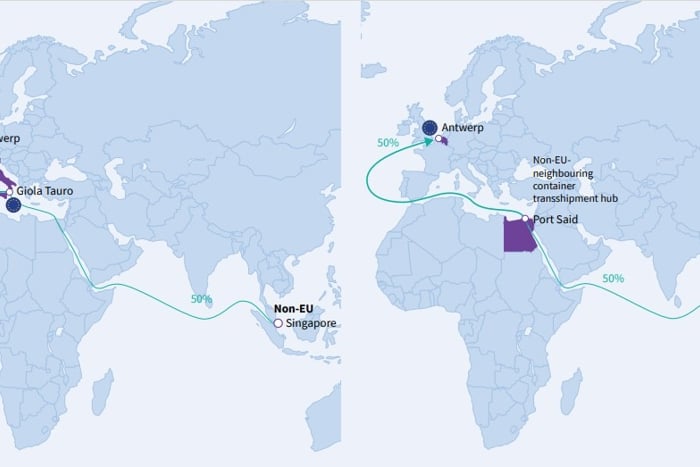Where a voyage is broken with a non-EEA port call near to an EU Member State, shipowners could theoretically minimise exposure to EU ETS, by shortening the overall voyage and emissions in scope of ETS. In order to reduce the risk of such evasive port calls and the relocation of container transhipment activities to ports outside of the EU, the EU ETS specifically excludes stops of containerships in a neighbouring container transhipment port from the definition of "port of call".
To be listed as a neighbouring container transhipment port, the following criteria need to be met:
- The port’s share of transhipment of containers (measured in TEU) must exceed 65 % of the total container traffic of that port during the most recent twelve-month period for which relevant data are available.
- The port must be located outside the Union but less than 300 nautical miles from a port under the jurisdiction of a Member State.
- The non-EEA country in which the port exists should not be applying their own measures similar to EU ETS.
All neighbouring container transhipment ports meeting these criteria are clearly identified in Implementing Regulation (EU) 2023/2297. Currently, only two ports are listed as container transhipment ports:
- East Port Said, Egypt
- Tangier Med, Morocco
This list will be kept under review and updated every two years, by 31 December. It is anticipated that the next update of this list will happen between October and December 2025.
As such, where a container ship departs from a non-EEA port, and stops at an identified container transhipment port, before continuing the voyage into an EEA port (or vice versa), the total voyage exposed to EU ETS will be from the stop prior to the identified container transhipment port, to the EEA port (or vice versa).
Currently only stops of container ships are covered by the transhipment port requirements. It is possible that additional ship types will be included in future revisions of the ETS. Similarly, the EC will keep under review the implementation of the EU ETS, monitoring evasive behaviours, with the view to potentially addressing these in future EU ETS revisions.






